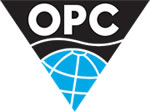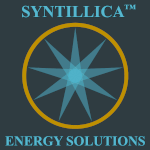South America / GoM
Country profile: Suriname
| Location: | Northern South America, bordering the North Atlantic Ocean, between French Guiana and Guyana |
| Climate: | tropical; moderated by trade winds |
| Terrain: | mostly rolling hills; narrow coastal plain with swamps |
| Size: | 163270 sq. km total (Land area: 161470 sq. km Water area: 1800 sq.km) |
| Population: | 475,996 (July 2008 est.) |
| Languages: | Dutch (official), English (widely spoken), Sranang Tongo (Surinamese, sometimes called Taki-Taki, is native language of Creoles and much of the younger population and is lingua franca among others), Caribbean Hindustani (a dialect of Hindi), Javanese |
| Government: | constitutional democracy |
| Capital city: | Paramaribo |
| Legal system: | based on Dutch legal system incorporating French penal theory; accepts compulsory ICJ jurisdiction with reservations |
| Currency: | Surinam dollar (SRD) |
| Licensing: |
Country profile
The islands of the Caribbean basin are predominantly net energy importers, with the exception of Trinidad and Tobago. Agriculture and natural resource extraction activities continue to constitute the basis of the islands' economies, though the tourism and service sectors are growing. In recent years, the Caribbean countries have been worried that higher global oil prices will impair their efforts to expand economically. In response, the island nations have been discussing ways to better integrate their energy sectors, especially in regards to increased natural gas exports from Trinidad and Tobago to other islands. These efforts have also focused on the major external energy suppliers to the region, such as Mexico and Venezuela.
First explored by the Spaniards in the 16th century and then settled by the English in the mid-17th century, Suriname became a Dutch colony in 1667. With the abolition of slavery in 1863, workers were brought in from India and Java. Independence from the Netherlands was granted in 1975. Five years later the civilian government was replaced by a military regime that soon declared a socialist republic. It continued to exert control through a succession of nominally civilian administrations until 1987, when international pressure finally forced a democratic election. In 1990, the military overthrew the civilian leadership, but a democratically elected government - a four-party New Front coalition - returned to power in 1991 and has ruled since; the coalition expanded to eight parties in 2005.
Energy production and consumption
| Oil | Gas | |
| Production: | 9,461 bbl/day (2005 est.) | NaN |
| Consumption: | 12,000 bbl/day (2005 est.) | |
| Exports: | 3,151 bbl/day (2004 est.) | |
| Imports: | 6,032 bbl/day (2004 est.) | |
| Reserves: | 111 million bbl (1 January 2006 est.) | |
| Major fields: |
Suriname - recent news
| 24 Nov 25 |
Suriname: Staatsolie launches Open-Door Offering Staatsolie has launched its Open-Door Offering, an initiative aimed at unlocking new exploration opportunities in the Guiana Basin, one of the world’s most prolific hydrocarbon basins. Approx. 60 percent of Suriname’s offshore acreage is available, offering qualified Exploration and Production companies flexibility to access a diverse range of exploration opportunities, from shallow waters to deep offshore. |
| 16 Nov 25 |
Suriname: PETRONAS and Staatsolie declare commerciality for Sloanea field, marking Suriname’s first gas development milestone PETRONAS, through its wholly-owned subsidiary PETRONAS Suriname E&P B.V. (PSEPBV), together with Statsolie, has achieved a significant milestone with the Declaration of Commerciality of the Sloanea field in Block 52, marking Suriname’s first gas development milestone in its expanding deepwater energy landscape. |
| 13 Nov 25 |
Suriname: Staatsolie approves Commercial Field for Sloanea-1 gas discovery in Block 52 Staatsolie announced its approval on 11 November 2025 of the Commercial Field for the Sloanea-1 gas discovery, located in Block 52 offshore Suriname. |
| 05 Nov 25 |
Suriname: Staatsolie signs contracts for offshore Blocks 9 and 10 with PETRONAS and Chevron Staatsolie Maatschappij Suriname has signed Production Sharing Contracts (PSCs) for offshore Blocks 9 and 10. The contracts were signed with the operators PETRONAS Suriname E&P (Block 9) and Chevron Suriname Exploration (Block 10). |
| 09 Oct 25 |
Suriname: Staatsolie has announced that Chevron Suriname Exploration is expected to begin drilling the Korikori-1 exploration well this month Staatsolie has announced that Chevron Suriname Exploration is expected to begin drilling the Korikori-1 exploration well this month. The well is located approx. 78 kms offshore, in the north-central part of Block 5 at a water depth of around forty meters. |
Suriname - more news
Other countries in this region
- Argentina,
- Aruba,
- Bahamas,
- Barbados,
- Belize,
- Bermuda,
- Bolivia,
- Brazil,
- Canada,
- Chile,
- Colombia,
- Costa Rica,
- Cuba,
- Dominican Republic,
- Ecuador,
- Falklands,
- French Guiana,
- Grenada,
- Guatemala,
- Gulf of Mexico,
- Guyana,
- Honduras,
- Jamaica,
- Mexico,
- Nicaragua,
- Panama,
- Paraguay,
- Peru,
- Trinidad,
- Uruguay,
- USA,
- Venezuela











